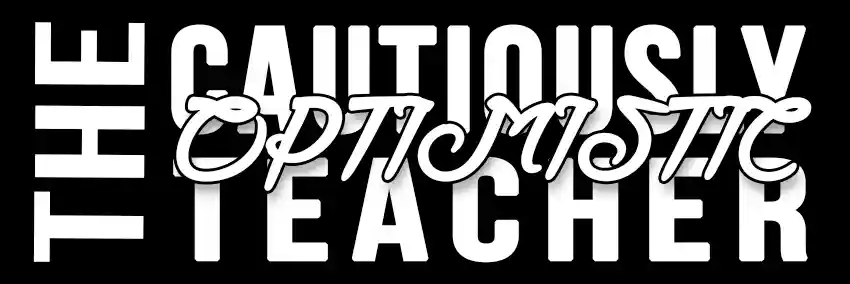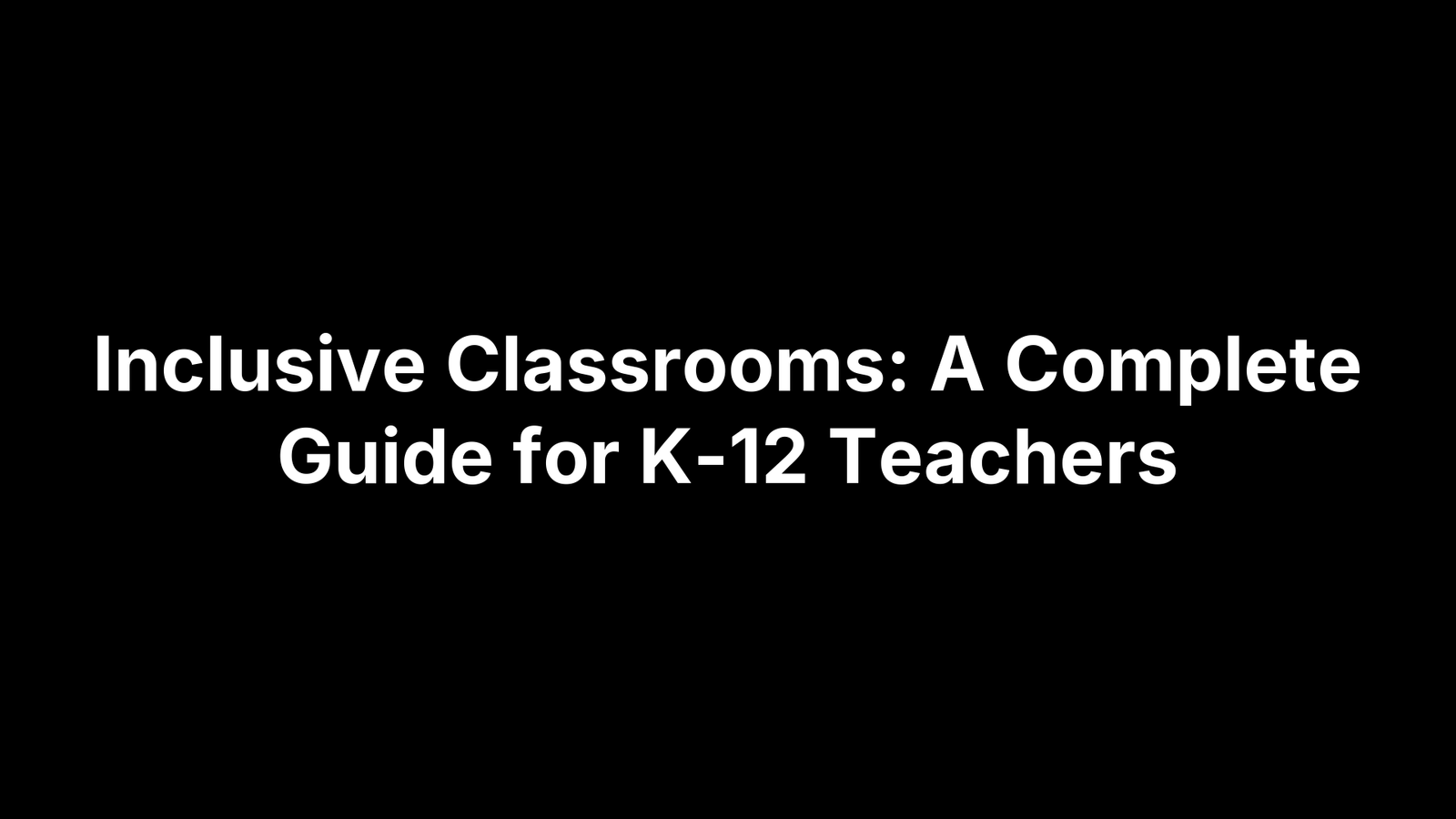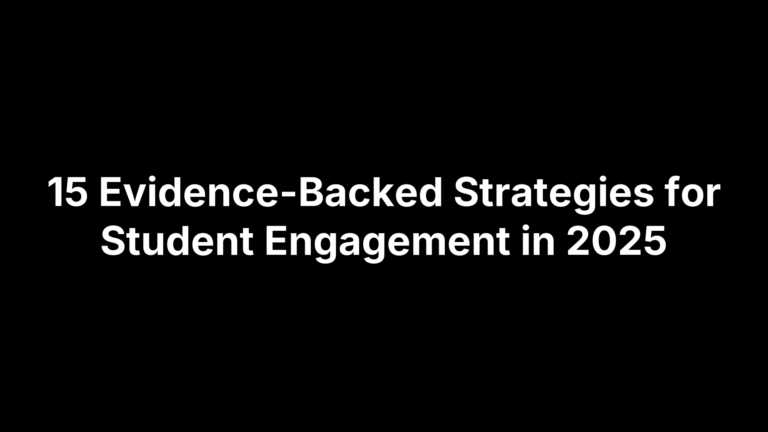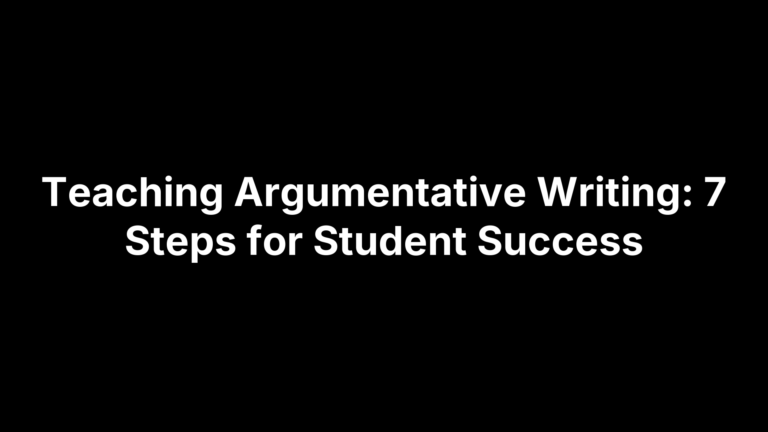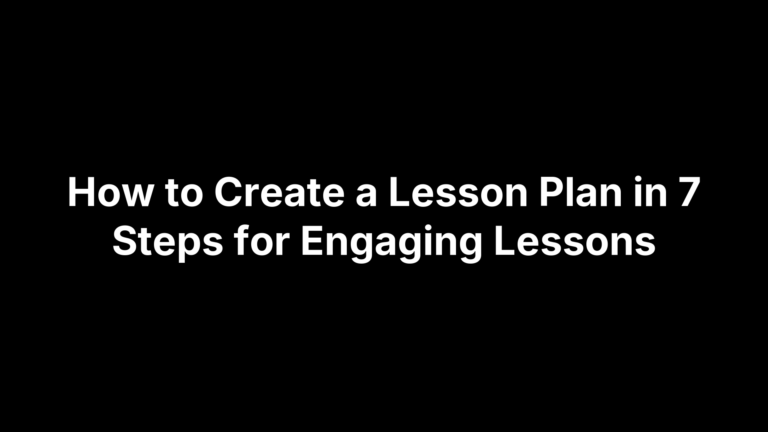Inclusive Classrooms: A Complete Guide for K-12 Teachers
An inclusive classroom is a general education setting where every student—those with and without disabilities—learns together as full members of the community. Instruction, supports, and materials are designed so all learners can access grade-level content, participate meaningfully, and be held to high expectations. Instead of moving students out to “fit” the lesson, we adapt the lesson to fit the students, using strategies like co-teaching, Universal Design for Learning, and targeted accommodations. The result is a room where belonging, independence, and academic growth are the norm for everyone.
This guide gives K–12 teachers a clear, practical roadmap to do inclusion well. You’ll find the why (research-backed benefits for all learners) and the how (legal foundations, core principles, and day-to-day moves). We’ll unpack co-teaching models and schedules; UDL routines; differentiation and flexible grouping; accommodations vs. modifications; assistive tech and classroom-ready AI tools. You’ll get culture-building norms, PBIS and restorative practices, culturally responsive strategies, grading and progress monitoring tips, and collaboration checklists for families and specialists. We’ll include supports for multilingual learners, peer-led structures, sensory-friendly room design, a 30–60–90 day plan, grade-band examples, how inclusion fits with MTSS/RTI, and solutions to common hurdles—plus downloadable tools you can use today. Let’s get started.
The benefits of inclusive classrooms for all learners
When inclusive classrooms are done well, everybody learns more and belongs more. Research summarized by education organizations shows that students with disabilities in inclusive settings are absent less, grow stronger in reading and math, and are more likely to pursue jobs or education after high school. Their peers benefit, too: they become more comfortable with differences, build caring friendships, and report higher self-esteem. Inclusion also reduces stigma and strengthens collaboration, perspective-taking, and critical thinking across the class.
- Academic gains for all: Students with disabilities make measurable progress in reading and math; peers benefit from clear instruction and shared supports.
- Stronger social-emotional outcomes: Inclusive classrooms reduce stigma and foster authentic, diverse friendships.
- Better engagement and attendance: Inclusion is linked to fewer absences and higher participation.
- High expectations with access: Students learn grade-level content with appropriate supports, not lowered standards.
- More effective teaching: Co-teaching, UDL, and varied methods promote thoughtfulness, mutual respect, and academic excellence.
The legal foundations: IDEA, LRE, FAPE, IEPs, and Section 504
The law is your ally in building inclusive classrooms. Under the Individuals with Disabilities Education Act (IDEA), students who receive special education are general education students first, and schools must design supports so they can learn with peers. Knowing the essentials below helps you plan instruction, schedule services, and advocate for access while staying compliant and keeping inclusive classrooms academically rigorous.
- IDEA: The federal special education law. It guarantees services and supports so eligible students can access grade-level learning.
- LRE (Least Restrictive Environment): Students learn with nondisabled peers as much as possible. Co-teaching and push-in supports help meet LRE.
- FAPE (Free Appropriate Public Education): Students receive an education at no cost that is appropriate to their needs, with high standards and needed supports.
- IEPs (Individualized Education Programs): Legally binding plans with goals, services, accommodations/modifications, and progress monitoring, created by a team with families.
- Section 504: A civil-rights law that ensures equal access and reasonable accommodations for students with disabilities, including those without an IEP.
These safeguards set the floor; the next section shows the core principles that make inclusion work in daily practice.
Core principles of effective inclusion
Effective inclusion isn’t a program; it’s how you run the room so every student is a full member. Inclusive classrooms rest on a few non‑negotiables: belonging, access to grade‑level curriculum, and high expectations—with the right supports. Anchor daily decisions to these and you reduce stigma, increase engagement, and keep learning both rigorous and humane.
- Belonging first: Every student has membership, shared experiences, and visible roles in class life.
- Access through UDL: Offer multiple ways to engage, represent, and express; adapt materials without diluting content.
- High expectations + scaffolds: Teach standards-based content with appropriate accommodations or modifications.
- Collaborative delivery: Use co-teaching and push‑in services with clear roles and shared planning.
- Build independence: Paraprofessionals facilitate access, fade support, and coach self‑advocacy.
- Culturally responsive practice: Include multiple perspectives and challenge assumptions to reduce marginalization.
- Data‑informed instruction: Align to IEP/504s and monitor progress transparently.
- LRE in action: Schedule supports with minimal disruption so students learn with peers.
- Shared norms: Explicit discussion guidelines promote respectful, productive participation.
How inclusive classrooms are staffed and scheduled (co-teaching models)
Staffing and schedules make or break inclusive classrooms. In effective models, general and special educators plan and teach together, with supports delivered in class through co‑teaching or push‑in services so students learn alongside peers. Both teachers serve all students, specialist time is arranged with minimal disruption, and paraprofessionals facilitate access while building independence rather than “hovering.”
- Push‑in co‑teaching: A special educator joins core blocks to co‑plan, co‑instruct, scaffold tasks, and collect data for IEP goals.
- Station/small‑group rotations: Teachers design parallel tasks and rotate groups to differentiate without lowering standards.
- Parallel instruction: The class splits into two heterogeneous groups working toward the same objective to reduce student‑to‑teacher ratio.
- Brief preview/reteach: One teacher runs the class while the other pre‑teaches vocabulary or reteaches skills—short, purposeful, and non‑stigmatizing.
- One teach, one observe/assist: Use observation for targeted data; assistance focuses on cues and fading support.
- Paraprofessionals as facilitators: Plan roles that promote student independence and access, not gatekeeping.
- Service provider scheduling: Speech, OT, or reading supports push in when possible; pull‑outs occur sparingly and avoid core instruction times.
Universal Design for Learning: practical moves for daily lessons
UDL makes access a design feature, not an afterthought. Plan for learner variability from the start by offering multiple means of engagement, representation, and action/expression. When inclusive classrooms use these routines every day, more students reach grade-level goals with fewer pull-outs and less stigma.
- Clarify the target: Post plain-language “I can” goals and success criteria with a model/exemplar.
- Represent in many modes: Combine concise text, visuals, manipulatives, and brief video; add captions/alt text.
- Pre-teach language: Front-load key vocabulary with visuals, morpheme notes, and a personal glossary.
- Offer product choices: Essays, podcasts, slide decks, sketchnotes, or demonstrations—single rubric, varied outputs.
- Scaffold thinking: Provide graphic organizers, checklists, color-coding, and partially worked examples.
- Build engagement: Use relevant hooks, culturally responsive examples, and meaningful student choice.
- Support expression: Allow speech-to-text, read-aloud, word banks, and sentence frames that fade over time.
- Time and pacing: Chunk tasks, include micro-breaks, and permit flexible time within a predictable routine.
- Frequent checks for understanding: Use quick polls, fist-to-five, or exit tickets; adjust instruction in the moment.
These UDL moves set the stage; next, layer differentiated instruction and flexible grouping to target specific needs.
Differentiated instruction and flexible grouping
Differentiated instruction tailors content, process, and product to students’ readiness, interests, and language profiles while keeping the same grade-level goals. In inclusive classrooms, flexible grouping is the engine: students move fluidly among whole-class, heterogeneous teams, and short-term skills groups based on real-time evidence, not labels. The result is access plus challenge for everyone.
- Start with quick data: Use entry slips or brief CFUs to decide who needs pre-teach, reteach, or enrichment.
- Group with purpose: Mix students heterogeneously for discussion; form temporary skill groups for targeted practice or acceleration; pair intentionally for language supports.
- Tier the task, not the standard: Offer varied scaffolds, models, and complexity levels that point to the same success criteria.
- Run tight rotations: Alternate teacher-led minis, collaborative practice, and independent/choice stations with clear timers and jobs.
- Embed roles and norms: Assign and rotate roles (e.g., recorder, reporter, facilitator) to ensure equitable participation and accountability.
- Regroup often: Monitor with exit tickets and observations; adjust groups, fade paraprofessional support, and update IEP/504-aligned goals accordingly.
Accommodations, modifications, assistive tech, and AI tools
Inclusive classrooms increase access without lowering expectations. Think of accommodations as changes to how students learn or show learning, and modifications as changes to what they’re expected to master. Both should align to IEP/504 plans, be delivered with minimal disruption to the class routine, and be paired with data so supports can fade as independence grows.
Accommodations (how): Read‑aloud or captioned media, visual organizers, chunked directions, alternative response modes (speech‑to‑text, word banks), strategic seating/sensory tools, and flexible time or check‑ins.
Modifications (what): Adjusted texts or task complexity, prioritized standards, simplified rubrics, or alternate assessments—team‑approved and used when required by the IEP while keeping students in shared activities.
Assistive technology: Low‑tech (highlighters, manipulatives), mid‑tech (audiobooks, interactive whiteboards), and high‑tech (text‑to‑speech, word prediction, communication apps). Provide instruction in tool use and track impact.
Teacher‑facing AI tools: Quickly generate leveled passages, scaffolded question sets, accommodation menus, checklists, and draft progress notes. Examples include a Differentiated Instruction Helper, Worksheet Maker, Question Generator, and Report Card Commentor. Follow district privacy rules and review outputs for accuracy and bias in inclusive classrooms.
Building classroom culture and discussion norms
Culture in inclusive classrooms is built, not assumed. Start day one by co‑creating clear discussion norms and practicing them so every student feels safe, supported, and encouraged to contribute. Make multiple perspectives the default: challenge ideas with evidence while treating people with respect. Teach wait time, turn‑and‑talk, and sentence frames, then revisit norms after tough moments to keep belonging real.
- Co-create agreements: listen to understand, one mic, evidence, impact > intent.
- Normalize access: wait time, visuals, sentence frames, optional anonymous input.
- Rotate roles: facilitator, reporter, equity monitor, timekeeper to balance talk.
- Use protocols: Think‑Pair‑Share, Four Corners, and circle to structure hard topics.
- Address bias: correct inaccuracies promptly and invite repair without shaming.
- Avoid tokenizing: pose questions to all; check privately; parapros cue then fade.
Behavior and SEL supports (PBIS, restorative practices, trauma-informed)
Strong behavior and SEL systems keep inclusive classrooms safe, predictable, and focused on learning. Think instruction-first: teach expectations, practice routines, and respond to missteps as opportunities to learn, not labels to assign. Blend PBIS for clarity and consistency, restorative practices to repair relationships, and a trauma‑informed lens to reduce triggers and build regulation—while maintaining access to peers and grade-level work.
- PBIS routines: Co-create 3–5 positively stated expectations; explicitly teach, model, and practice them in common contexts; give specific acknowledgments; use brief, neutral corrections.
- Predictability + regulation: Post visual schedules, chunk transitions, offer micro‑breaks, and provide a calm corner or toolkits for co‑regulation—standard features in inclusive classrooms.
- Restorative responses: Use proactive circles for connection and responsive circles after harm: who was impacted, what needs repairing, and how we’ll restore trust; plan reintegration.
- Trauma‑informed choices: Avoid power struggles; offer meaningful choices, adjust seating/transition plans, and check in on feelings and needs before demands escalate.
- De‑escalation flow:
Pause → name the emotion → offer two choices → reduce demands → time‑in with an adult, then reteach; protect dignity and learning time. - Data with equity: Monitor office referrals and acknowledgments by time, setting, and student groups to spot patterns; adjust instruction and supports accordingly.
- Team alignment: Coordinate with counselors, social workers, and paraprofessionals on common scripts and cueing; prioritize in‑class interventions, using brief, planned removals only when needed with a return‑to‑learn plan.
Culturally responsive and anti-bias practices in inclusive settings
In inclusive classrooms, cultural responsiveness isn’t an add-on—it’s how we prevent marginalization and make learning meaningful. When content reflects many voices and classroom talk welcomes multiple perspectives, students become more comfortable with differences and build authentic respect. Plan for this on purpose: examine materials, surface assumptions, and set discussion norms so you can correct stereotypes while protecting dignity.
- Audit representation: Include authors and scholars from the groups you study; avoid “diversity as a sidebar” treatments.
- Plan for hard topics: Establish guidelines, structure discussions, and calmly challenge inaccurate claims.
- Don’t tokenize students: Pose questions to everyone; check privately before inviting lived-experience sharing.
- Watch equity signals: Track who talks, who’s interrupted, and who gets detailed feedback; adjust roles and prompts.
- Broaden examples: Use varied cultural reference points and invite student-sourced examples.
- Honor identity and language: Learn names, pronunciations, and preferred terms; value home languages as assets.
- Offer access options: Provide sentence frames, visuals, and anonymous input to reduce status differences.
Assessment, grading, and progress monitoring in inclusion
Assessment in inclusive classrooms should be transparent, standards‑based, and focused on evidence of learning. Grade what students know and can do against clear targets, not their disability, behavior, or the type of support they used. Accommodations change how students show learning and should not change the grade target; modifications change what’s taught and require grading against the IEP’s prioritized goals.
- Make targets visible: Post plain‑language learning goals and success criteria with exemplars so all students know what quality looks like.
- Use multiple measures: Collect evidence through written, oral, performance, and visual products—one rubric tied to the same standard.
- Check understanding often: Quick CFUs, exit tickets, and conferences drive reteach/enrichment decisions and flexible regrouping.
- Document supports: Note which accommodations or modifications were used on tasks; keep records private but consistent across the team.
- Grade fairly: With accommodations only, apply the same grade‑level criteria. With modifications, evaluate progress toward IEP goals/priority standards identified by the team.
- Monitor IEP goals routinely: Use brief probes, work samples, and observation notes on a regular cadence; chart progress and adjust instruction.
- Share data with students and families: Student self‑assessment, goal setting, and simple progress graphs build ownership and independence.
- Check for equity: Review results by task type and student groups; address gaps through UDL adjustments, scaffolds, or reteaching—not lowered expectations.
Collaborating with families, specialists, and paraprofessionals
In inclusive classrooms, collaboration is the engine that turns plans into daily access. Treat families as expert partners, align with specialists on instruction and services, and ensure paraprofessionals facilitate learning while building student independence. Keep communication clear, predictable, and focused on goals so supports happen with minimal disruption to the class routine and program.
- Start with a shared profile: Create a one‑page learner snapshot (strengths, interests, access needs, IEP/504 highlights, effective strategies).
- Plan together, briefly and often: A weekly 15‑minute agenda—goal focus, upcoming tasks, UDL/adaptations, accommodations/modifications, data roles.
- Clarify in‑class roles: Who leads instruction, who gathers data, how paraprofessionals cue, scaffold, and fade support.
- Schedule services smartly: Prefer push‑in; if pull‑out is required, coordinate timing and note what the student won’t miss.
- Keep families in the loop: Plain‑language updates with artifacts; offer interpreters and multiple contact options.
- Document and adjust: Track accommodations/modifications used, progress toward goals, and next steps the team will try.
- Protect dignity: Address concerns promptly, avoid tokenizing, and invite feedback on how supports are working at home and school.
Supporting multilingual learners and students with language differences
Multilingual learners succeed in inclusive classrooms when language is treated as a strength and access is designed from the start. Plan lessons with both content and language objectives, use UDL routines that reduce linguistic load, and co‑plan with ESL/ELD and speech‑language specialists so supports happen in class with minimal disruption. Protect dignity: learn and use students’ names correctly, avoid tokenizing, and invite many voices—without putting any one student on the spot.
- Make language visible: Post content + language goals; model with quick think‑alouds.
- Front‑load vocabulary: Use visuals, morphology notes, and a bilingual/picture glossary.
- Represent in many modes: Captions, gestures, anchor charts, and manipulatives reduce barrier words.
- Scaffold expression: Sentence frames, word banks, and speech‑to‑text; fade supports over time.
- Honor home languages: Allow translanguaging, note‑taking, and drafting in L1; assess ideas with the same rubric.
- Structure interaction: Strategic pairs/roles, extra wait time, and clear turn‑taking protocols.
- Assess fairly: Read directions aloud, provide additional time and dictionaries; grade content, not accent.
- Partner with families: Offer interpreters and translated updates; invite cultural and linguistic assets into class life.
Peer supports: cooperative learning and student leadership
In inclusive classrooms, peers are a powerful scaffold. Well-designed cooperative learning and student leadership normalize support, strengthen belonging, and lift achievement for everyone. The key is structure: clear roles, routines, and sentence frames so help flows both ways, not just “from strong to struggling.” Teach peers to prompt, model, and celebrate without taking over; rotate leadership so access isn’t tied to a label; and check impact so supports grow independence, not dependency.
- Structured teams (Jigsaw/Reciprocal Teaching): Heterogeneous groups with shared products and accountable talk.
- Reciprocal peer tutoring: Short, criterion-based, role-switched sessions with timers and error-correction prompts.
- Leadership roles for all: Tech captain, materials manager, equity monitor—rotated and taught explicitly.
- Accessible note-sharing: Skeleton notes plus rotating peer scribe; clarity without giving answers.
- Buddy routines for transitions: Optional checklists, discreet cues, and planned fading to boost autonomy.
Planning your space: physical layout and sensory-friendly design
Space teaches. In inclusive classrooms, the room layout is part of instruction: it normalizes supports, keeps traffic flowing, and lets adults circulate without hovering. Aim for predictable, clearly labeled zones, discreet sensory options, and visuals that make expectations and time visible. A tidy, flexible setup reduces cognitive load, protects dignity, and boosts participation for every learner.
- Clear sightlines and traffic: U-shapes or paired pods; aisles fit mobility devices.
- Purposeful zones: Teach area, small-group table, independent/tech stations, calm corner, adult perch.
- Visual time and tasks: Daily schedule, timers, color-coded directions at student eye level.
- Flexible seating with norms: Options (chairs, cushions, standing) as choices—not labels or rewards.
- Sound and light: Soft lighting, felt/glide caps, headphone bin; avoid visual clutter.
- Tools within reach: Labeled bins for organizers, manipulatives, AAC/AT charging and storage.
Planning guide: 30–60–90 day plan, sample daily schedule, and lesson arc
Use this quick-start roadmap to launch inclusive classrooms over 90 days and run consistent, co-taught lessons. Start small, make routines visible, and let data guide regrouping and supports so access and high expectations stay front and center.
30–60–90 day plan
Build culture, access routines, and collaborative systems in three sprints that keep inclusive classrooms predictable and responsive.
- 0–30 days: Co-create norms; gather learner snapshots; establish UDL routines; finalize push‑in service schedules.
- 31–60 days: Co‑plan units; run station rotations; start biweekly progress checks; refine accommodations.
- 61–90 days: Expand peer supports; regroup using data; fade adult prompts; tune IEP/504 implementation.
Sample daily schedule (co‑taught)
A 60‑minute block that normalizes access, co‑teaching roles, and quick progress checks in inclusive classrooms.
- 0:00 Warm‑up/check‑in; preview goals, vocabulary, visuals.
- 0:05 Mini‑lesson: dual delivery; CFUs, captions, manipulatives.
- 0:15 Rotations: teacher‑led table, collaborative task, independent/AT station.
- 0:45 Targeted reteach/enrich micro‑groups; brief specialist push‑in.
- 0:55 Share, exit ticket, update progress notes.
Lesson arc (UDL + DI)
Use a repeatable flow that keeps rigor and access aligned while building independence.
- Hook + goals: Plain‑language “I can” and success criteria.
- Input: Multi‑modal modeling; pre‑teach key language.
- Guided practice: Think‑alouds with frequent CFUs.
- Differentiated practice: Choices with scaffolds that fade.
- Reflect + plan: Quick self‑assessment; set regrouping for tomorrow.
Grade-band examples: K–2, 3–5, 6–8, and 9–12
Here are quick, concrete snapshots of inclusive classrooms across grade bands. Each example keeps grade-level goals intact while layering UDL routines, differentiated practice, and accommodations so students learn together with minimal disruption and maximum dignity.
K–2: Phonics mini-lesson with gestures and visuals; station rotation: teacher-led blending, picture sorts, and captioned listening center; math story problems with manipulatives; students choose to draw, tell, or write; calm corner and AAC/word banks.
Grades 3–5: Nonfiction animal research in jigsaw teams with bilingual/picture glossaries; product choice (poster, slides, audio); fraction stations using tiles and number lines with math-talk frames; exit ticket tiers guide regrouping.
Grades 6–8: Argument writing with co-constructed rubric, annotated mentor texts, and paragraph frames; conference micro-groups for reteach/enrich; science lab uses parallel groups, rotating roles, visual steps, and quick safety/skills pre-teach.
Grades 9–12: History seminar on primary sources with vocabulary preview, captions, and Four Corners protocol; product choice (one-pager or podcast); algebra stations (modeling, practice, application) with scaffolded organizers and IEP-aligned timing.
Evidence to know: what the research says about inclusion
The bottom line from research summaries: when inclusive classrooms are implemented well, students with disabilities and their peers benefit academically and socially. Studies cited by national education organizations report fewer absences for students with disabilities in inclusive settings, stronger growth in reading and math, and higher likelihood of postsecondary education and employment. Peers gain comfort with differences, positive self-esteem, and diverse, caring friendships. Classrooms also see reduced stigma and more thoughtful, collaborative learning.
- Academic gains: Students with disabilities improve in reading and math in inclusive classrooms.
- Long-term outcomes: Greater odds of jobs and education after high school.
- Peer benefits: Increased tolerance, friendships, and self-esteem.
- Climate effects: Less stigma; stronger collaboration and critical thinking.
- Key condition: Success depends on high expectations, UDL, co-teaching, and minimal disruption from services.
How inclusion fits within MTSS and RTI
Multi‑Tiered Systems of Supports (MTSS) and Response to Intervention (RTI) organize help into layers so students get what they need, when they need it—without leaving the community. Inclusive classrooms are the Tier 1 foundation: high‑quality, universally accessible instruction (UDL, co‑teaching, PBIS), frequent checks for understanding, and strong classroom culture. As needs surface, supports intensify, but membership, grade‑level access, and Least Restrictive Environment remain the default.
Tier 1 (for all): Standards‑based instruction with UDL, clear norms, CFUs, and proactive behavior supports delivered in general education.
Tier 2 (targeted): Short‑term, small‑group interventions during core blocks (push‑in where possible), documented with regular progress monitoring.
Tier 3 (intensive): Increased frequency/duration and individualized scaffolds—often one‑to‑one—delivered with minimal disruption; data may prompt IEP/504 consideration.
Data cycle: Screen → plan → deliver → monitor → adjust; keep grade‑level goals central, fade adult support, and document accommodations vs. modifications.
This alignment keeps help timely and effective while protecting belonging and rigor.
Common challenges and how to solve them
Even well-run inclusive classrooms hit predictable friction: limited co-planning time, uneven co‑teaching roles, pull‑outs that break lesson flow, paraprofessional “hovering,” group‑work behavior spikes, and uncertainty about grading with accommodations versus modifications. Name the patterns, then fix them with tight routines that protect membership, minimize disruption, and keep standards high for every learner.
- Co‑planning time: 15‑minute weekly template; shared goals, roles, and data.
- Uneven roles: Rotate co‑teaching models; use observation for targeted data.
- Paraprofessionals hovering: Cue → prompt → fade; support groups, not one student.
- Pull‑outs disrupt: Prefer push‑in; schedule pull‑outs away from core lessons.
- Group behavior spikes: Teach roles, practice routines; use PBIS and micro‑breaks.
- Grading confusion: Accommodations = grade standards; modifications = IEP goals.
- Materials inaccessible: Pre‑teach vocab; add captions/visuals; provide organizers.
- Tokenizing students: Ask all; invite private input; correct stereotypes respectfully.
Tools and templates you can use today
Here’s a ready-to-use kit for inclusive classrooms. Copy to your drive, print for clipboards, and drop into planning binders. Each template helps you co-plan quickly, deliver supports with minimal disruption, and monitor learning without lowering expectations—so access and rigor stay aligned for every student in inclusive classrooms.
- Co-planning agenda: 15-minute template with roles, data, next steps.
- Learner snapshot: Strengths, access needs, IEP/504 highlights, effective strategies.
- UDL lesson planner: Goals, representations, scaffolds, product choices.
- Station rotation planner: Timers, groupings, and student role cards.
- Accommodation vs. modification menu: One-page guide with quick decision tree.
- Progress-monitoring sheet: Probe, notes, mini-graph, fade plan.
- PBIS expectations matrix: Routines scripts and acknowledgment ideas.
- Restorative prompts: Circle questions and reintegration checklist.
- Discussion norms poster: Agreements plus sentence frames for balanced talk.
- Family communication log: Multilingual options and artifact attachments.
- Assistive tech checklist: TTS, speech-to-text, AAC; charging/storage plan.
- AI prompts pack: For DI Helper, Worksheet Maker, Question Generator, Commentor.
- Exit-ticket bank: Tiered items for reteach or enrich decisions.
Use these pieces to standardize routines across inclusive classrooms and free up time for high-impact instruction.
FAQs about inclusive classrooms
Teachers share the same top questions when starting or strengthening inclusive classrooms. Here are clear, research‑aligned answers you can use to plan instruction, talk with families, and advocate for access while keeping expectations high for every learner in your room.
- What is an inclusive classroom? A general education class where all students learn together with built‑in supports.
- Who benefits? Everyone—academics improve, stigma drops, and friendships and confidence grow.
- Is inclusion required? IDEA requires the Least Restrictive Environment (LRE) with appropriate supports.
- What’s co‑teaching? General and special educators co‑plan and co‑teach; both serve all students.
- Accommodations vs. modifications? Accommodations change how; modifications change what is taught/assessed.
- How do I grade? With accommodations, grade grade‑level standards; with modifications, grade IEP goals.
- What about services and paras? Prefer push‑in; paraprofessionals facilitate access and fade support.
- How is behavior supported? Teach expectations (PBIS), repair harm restoratively, and use trauma‑informed routines.
Key takeaways
Inclusive classrooms thrive when we design for belonging, grade‑level access, and high expectations—delivered through UDL, co‑teaching, and data‑informed supports. Let IDEA, LRE, and FAPE be the floor, and make routines the engine: clear norms, flexible groups, targeted accommodations, and steady progress checks. Start small, make it visible, and build independence.
- Belonging first: Full membership, shared experiences, visible roles.
- UDL by design: Multiple ways to engage, represent, and express.
- Differentiate smartly: Flexible groups and tiers without lowering standards.
- Co‑teach and push‑in: Specialists and paras facilitate, cue, then fade.
- Accommodations vs. modifications: Change the how vs. the what; grade accordingly.
- Behavior + SEL: PBIS, restorative responses, and trauma‑informed routines.
- Culturally responsive: Many voices in content and conversation.
- Monitor progress: Frequent checks aligned to IEP/504 within MTSS.
For ready-to-use planners, AI helpers, and unit plans that make this work doable tomorrow, visit The Cautiously Optimistic Teacher.
